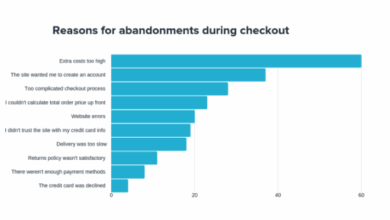
Rush to the web, a phenomenon that reshaped industries and personal lives, is explored in this comprehensive overview. From the early days of dial-up to the ubiquitous mobile internet, we trace the historical journey, examining the motivations behind this digital migration, and its impact across sectors. The story is one of both thrilling progress and challenging transitions.
This exploration delves into the pivotal moments that defined the rush, examining the technical hurdles, economic obstacles, and societal shifts that accompanied this monumental change. We’ll also look at the strategies for success in the digital realm and the future of this ongoing transformation.
Historical Context of the Rush to the Web
The internet’s evolution from a niche academic network to a global phenomenon has been a fascinating journey, dramatically reshaping commerce, communication, and culture. This transformation, often referred to as the “Rush to the Web,” was driven by a confluence of technological advancements, economic incentives, and societal desires. Understanding this history is crucial to appreciating the current digital landscape and predicting future trends.The transition was not immediate; it was a gradual process marked by significant milestones, each contributing to the interconnected world we inhabit today.
The factors pushing businesses and individuals online were diverse, including the promise of global reach, cost-effectiveness, and the ability to interact with a vast audience.
Key Events Leading to Widespread Adoption
The development of the internet and web technologies wasn’t a sudden explosion; it was a series of interconnected events that built upon each other. The early stages involved primarily academic and research communities. These foundational developments laid the groundwork for the widespread adoption of the internet by businesses and individuals.
| Date | Event | Description |
|---|---|---|
| 1969 | ARPANET Established | The Advanced Research Projects Agency Network (ARPANET) is considered the precursor to the internet. It connected various research institutions, marking the beginning of networked communication. |
| 1983 | TCP/IP Adopted | The adoption of Transmission Control Protocol/Internet Protocol (TCP/IP) as the standard protocol for data transmission on the ARPANET paved the way for a more interconnected and standardized internet. |
| 1989 | World Wide Web Proposed | Tim Berners-Lee proposed the World Wide Web, a system of interconnected documents accessible via the internet. This marked a significant step towards user-friendly navigation and content sharing. |
| 1990 | First Web Browser | The creation of the first web browser enabled users to navigate and access web pages, initiating the shift towards a user-centric internet experience. |
| 1991 | WWW Publicly Available | The World Wide Web was made available to the public, making it accessible beyond research communities. |
| 1993 | Mosaic Browser Released | The Mosaic browser, a significant improvement over early browsers, was released, making web browsing more user-friendly and visually appealing. This increased public interest and use. |
| 1994 | Commercialization Begins | Commercial websites began appearing, signaling a shift towards profit-driven content and services on the web. |
| Late 1990s | Dot-com Boom | The rise of e-commerce and internet-based businesses led to a surge in investment and the creation of numerous online companies, showcasing the immense potential of the internet. |
Factors Driving Online Migration
Several factors propelled the migration of businesses and individuals online. Cost-effectiveness, global reach, and enhanced communication were crucial motivators.
- Cost Savings: Traditional marketing and distribution channels were often expensive. The internet offered a more cost-effective alternative for reaching a global audience.
- Global Reach: The internet eliminated geographical barriers, enabling businesses to expand their market reach and connect with customers worldwide. This was particularly important for small businesses.
- Enhanced Communication: Email, instant messaging, and online forums facilitated quicker and more efficient communication among individuals and businesses, fostering collaboration and interaction.
- New Business Models: E-commerce and online services emerged as entirely new business models, allowing businesses to operate and interact in novel ways.
Early Web vs. Current Web
The early web and the current web differ significantly in their functionality, accessibility, and user experience.
- Early Web: Characterized by static pages and limited interactivity. Content was often text-based, and the user experience was less visually appealing.
- Current Web: Dynamic, interactive, and visually rich. The web has evolved to include multimedia content, personalized experiences, and sophisticated applications. User interfaces have improved dramatically.
Stages of Internet Development
The internet’s development can be segmented into distinct stages, each marked by significant shifts in user experience and accessibility.
- Early Stages: Limited access, primarily used by researchers and academics. The interface was text-based and required specialized knowledge.
- Growth Phase: Increased accessibility, rise of user-friendly browsers, and the emergence of e-commerce. This phase saw the web become a vital tool for individuals and businesses.
- Modern Era: The internet is deeply integrated into daily life, with mobile devices and sophisticated applications becoming commonplace. The user experience is highly personalized and intuitive.
Motivations for the Rush
The late 1990s witnessed a phenomenal surge in internet adoption, a phenomenon often referred to as the “rush to the web.” This rapid transition wasn’t a spontaneous event but rather a confluence of factors pushing businesses and individuals towards online presence. Understanding these motivations provides valuable insight into the forces that shaped the digital landscape we inhabit today.The internet, once a niche technology, began to reveal its transformative potential.
The rush to the web was definitely on, and a prime example is the news of CDNow and First USA announcing an e-commerce deal. This significant partnership showcases how companies were scrambling to establish a digital presence, cdnow and first usa announce e commerce deal being a perfect illustration of that frantic pace. The entire online market was quickly transforming, pushing businesses to adapt or risk being left behind.
It really highlights the rapid shift in the marketplace during that era of online shopping boom.
Businesses and individuals alike recognized the vast opportunities it presented, leading to a fervent desire to participate in this evolving digital realm. This rush was not merely a technological pursuit; it was a strategic imperative for survival and growth in the face of rapidly changing market dynamics.
Primary Reasons for the Rush
The rush to the web was driven by a complex interplay of factors. Businesses saw a new frontier for expansion, and individuals sought new ways to connect and communicate. These motivations, while diverse, shared a common thread: a recognition of the transformative power of the internet.
- Enhanced Communication and Connectivity: The ability to communicate instantly across geographical boundaries was a powerful draw. Email, online forums, and early social media platforms offered new avenues for interaction, significantly impacting personal and professional relationships. This connectivity fostered collaboration and information sharing on an unprecedented scale.
- Expanding Market Reach: The internet provided businesses with an unparalleled opportunity to reach a global audience. No longer confined by geographical limitations, companies could tap into markets previously inaccessible, opening doors to new customers and revenue streams. This was particularly crucial for small businesses seeking to compete with established giants.
- Cost-Effective Operations: Many aspects of business operations, like marketing and customer service, became more efficient and less expensive online. E-commerce platforms reduced overhead associated with physical storefronts, while online customer support solutions streamlined interaction with customers.
- Data-Driven Decision Making: The web facilitated the collection and analysis of user data. Businesses could understand consumer behavior, preferences, and trends more effectively. This data-driven approach to decision-making led to more targeted marketing campaigns and better product development.
Technological Advancements
Key technological innovations fueled the rush to the web. The development of more user-friendly interfaces, faster internet speeds, and more powerful computing devices made the internet more accessible and practical. These advancements removed significant barriers to entry for both businesses and individuals.
- Increased Bandwidth: Faster internet speeds enabled smoother transmission of data, facilitating richer online experiences. This was critical for streaming multimedia content, interactive applications, and more complex web interactions.
- Improved User Interfaces: The development of graphical user interfaces (GUIs) made the internet more intuitive and accessible to a broader range of users. This made it easier for individuals and businesses to navigate websites and utilize online tools.
- Growth of Computing Power: More powerful computers and servers could handle the growing demands of the internet, enabling more complex applications and functionalities. This was crucial for supporting the increasing number of users and the growing complexity of online activities.
Changing Consumer Behavior
Consumer expectations and behaviors were dramatically reshaped by the internet. Consumers became more informed, demanding, and accustomed to online shopping, communication, and entertainment. This shift in consumer behavior pushed businesses to adopt online strategies to stay competitive.
The rush to the web is real, and companies are scrambling to keep up. A great example of this is Silicon Graphics’ decision to partner with pcorder.com to boost their e-commerce presence, as detailed in this article silicon graphics selects pcorder com to power e commerce strategy. This move highlights the increasing importance of online sales, and it’s just another piece of the puzzle in the ongoing race to dominate the digital marketplace.
It’s a trend that’s only going to intensify as more businesses realize the huge potential of the web.
- Increased Demand for Convenience: Consumers began to expect ease and accessibility in their interactions with businesses. The internet offered an array of convenient options for shopping, banking, and communication, impacting how businesses conducted operations and interacted with customers.
- Information-Driven Decision Making: Consumers became more informed and empowered. The ability to research products, compare prices, and access reviews directly influenced their purchasing decisions.
Marketing and Advertising’s Role
The rush to the web was heavily influenced by the evolving landscape of marketing and advertising. Companies recognized the potential of online channels to reach new audiences and drive sales. This led to the development of new marketing strategies and tools specifically tailored to the digital space.
- Emergence of Digital Marketing Strategies: Businesses began to experiment with new approaches like search engine optimization (), pay-per-click (PPC) advertising, and social media marketing to reach target audiences effectively. These techniques allowed for more targeted and measurable marketing campaigns.
- Increased Investment in Online Advertising: Companies invested heavily in online advertising, recognizing the potential of reaching large audiences cost-effectively. This investment further accelerated the adoption of the internet as a vital marketing tool.
Motivations Table
| Motivation | Description | Examples |
|---|---|---|
| Enhanced Communication | Improved connectivity and instant communication | Email, online forums, early social media platforms |
| Expanding Market Reach | Global reach and access to new markets | E-commerce businesses, international collaborations |
| Cost-Effective Operations | Reduced overhead and streamlined processes | Online customer service, e-commerce stores |
| Data-Driven Decision Making | Understanding consumer behavior and preferences | Targeted marketing campaigns, personalized recommendations |
Impacts on Various Sectors: Rush To The Web
The internet’s rapid adoption dramatically reshaped industries, from brick-and-mortar stores to global financial transactions. This surge in online activity fundamentally altered the way businesses operated and consumers interacted with goods and services. The effects rippled across sectors, creating both opportunities and challenges for companies and individuals.
Retail Industry Transformation
The shift to online shopping profoundly impacted the retail industry. Traditional brick-and-mortar stores faced increased competition from e-commerce giants. This necessitated a significant adaptation, forcing retailers to either embrace online sales or risk obsolescence. The rise of online marketplaces further intensified this pressure, as customers gained access to a wider range of products and competitive pricing. This led to a significant restructuring of the retail landscape, fostering a hybrid model of physical and online stores.
- Increased Competition: E-commerce platforms like Amazon disrupted traditional retail models, offering wider product selections and often lower prices, forcing traditional stores to either adapt or face dwindling sales. This competitive pressure led to innovative strategies for retailers, such as developing their own online presence and integrating online and offline experiences.
- New Business Models: Direct-to-consumer (DTC) brands emerged, leveraging online channels to connect directly with customers and bypass traditional retail intermediaries. This direct engagement often allowed for more personalized customer experiences and more targeted marketing campaigns.
- Evolution of Customer Expectations: Online shopping fostered customer expectations for seamless online experiences, such as easy navigation, secure payment options, and quick delivery. Retailers had to adapt to these evolving expectations or risk losing customers.
Communication Sector Evolution, Rush to the web
The rush to the web revolutionized communication, moving away from traditional methods like landlines and physical mail. Instant messaging, email, and social media platforms became integral parts of daily life. Businesses and individuals alike utilized these tools for communication, collaboration, and networking. This shift in communication patterns had a far-reaching impact on social interactions, business operations, and global connectivity.
- Rise of Social Media: Platforms like Facebook, Twitter, and Instagram emerged, fundamentally changing how people interacted, shared information, and formed communities. These platforms became powerful tools for marketing and communication for businesses, allowing them to connect directly with their target audience.
- Instant Messaging and Collaboration Tools: Applications like Skype and Slack facilitated real-time communication and collaboration, particularly within organizations and teams. These tools significantly enhanced productivity and communication efficiency.
- Global Connectivity: The internet allowed individuals and businesses to connect with people and markets worldwide, fostering international collaboration and trade. This facilitated a globalized communication landscape.
Financial Sector Transformation
The internet fundamentally reshaped the financial sector, creating new avenues for transactions, investments, and financial services. Online banking, e-commerce payments, and online brokerage platforms became commonplace. This revolution increased financial accessibility for many, though it also presented new security challenges.
- Online Banking and Payments: Online banking services offered convenience and accessibility to financial services, allowing customers to manage their accounts, make payments, and transfer funds from anywhere with internet access. This significantly altered the landscape of traditional banking.
- E-commerce Payments: Secure online payment systems, like PayPal and credit card processing, enabled the growth of e-commerce and facilitated global transactions. This fostered a global marketplace.
- Online Brokerage Platforms: Online brokerage platforms provided easier access to investment opportunities for individual investors, democratizing access to financial markets. This opened up investment possibilities to a wider range of individuals.
Media Landscape Transformation
The internet profoundly altered the media landscape, creating new avenues for content creation, distribution, and consumption. Traditional media outlets, like newspapers and television stations, had to adapt to the online environment or risk losing audiences. Online news platforms and blogs gained prominence, providing alternative sources of information. Digital content creation tools empowered individuals to become content creators and publishers.
- Rise of Online News Platforms: Online news outlets and blogs emerged as competitors to traditional media outlets, offering faster reporting and diverse perspectives. This shift influenced the speed and availability of news consumption.
- Digital Content Creation Tools: Individuals could create and distribute their own content, challenging traditional media gatekeepers. This empowered individuals to become content creators and publishers.
- Democratization of Information: The internet allowed for greater access to information and diverse perspectives, fostering a more informed citizenry and greater global communication.
Sector-Wise Impact Summary
| Sector | Impact | Examples |
|---|---|---|
| Retail | Increased competition, new business models, evolving customer expectations | Amazon disrupting traditional retail, DTC brands emerging |
| Communication | Rise of social media, instant messaging, global connectivity | Facebook, Twitter, Skype, Slack |
| Financial | Online banking, e-commerce payments, online brokerage platforms | Online banking services, PayPal, online brokerage accounts |
| Media | Rise of online news platforms, digital content creation tools, democratization of information | Online news outlets, blogging platforms, citizen journalism |
Challenges and Obstacles Encountered
The rush to the web, while ultimately transformative, was not without significant hurdles. Businesses and individuals alike faced a complex web of technical, economic, social, and security challenges. These obstacles often slowed adoption and presented unique problems for various sectors. Understanding these difficulties is crucial for appreciating the full story of the digital revolution.
Technical Challenges in Migrating to the Web
Early web migration was plagued by a lack of standardized technologies and protocols. Compatibility issues between different platforms and browsers were common. Developing websites that functioned reliably across a diverse range of computers and internet connections was a significant hurdle. Building robust and scalable web applications required a new set of skills and tools, and experienced developers were scarce.
The infrastructure for hosting and maintaining websites was also often inadequate, leading to downtime and performance problems. Moreover, the speed and reliability of internet access varied greatly, further complicating the process of online interaction.
Economic Obstacles to Web Adoption
The initial costs of adopting web technologies were substantial for many businesses. The need for new hardware, software, and training presented significant financial barriers. Small businesses, in particular, often lacked the resources to invest in the necessary infrastructure. Furthermore, the return on investment (ROI) for web adoption was not always clear, leading to hesitation. Many businesses were also concerned about the potential for online fraud and security breaches, further deterring their adoption of web technologies.
Security Concerns Associated with the Transition
The transition to the web brought with it new security concerns. The increased connectivity opened up new avenues for malicious actors. The lack of robust security protocols and encryption standards led to vulnerabilities. Protecting sensitive data, such as financial information, became a paramount concern. Data breaches and identity theft were a very real threat in the early days of widespread internet adoption.
These concerns naturally slowed the pace of adoption by both consumers and businesses.
Issues of Digital Literacy and Access to Technology
A significant challenge was the digital divide, a disparity in access to technology and digital literacy skills. Not everyone had access to computers or the internet, creating a significant barrier to participation. The lack of digital literacy among many segments of the population meant that many were excluded from the benefits of the web. This created an uneven playing field, where those with access to technology and training enjoyed greater opportunities than those who did not.
Summary of Obstacles
| Category | Description |
|---|---|
| Technical | Lack of standardized technologies, compatibility issues, limited infrastructure, variable internet access, and the need for specialized skills. |
| Economic | High initial costs for hardware, software, and training; uncertain ROI; and concerns about fraud and security breaches. |
| Security | Increased vulnerability to malicious actors; lack of robust security protocols; and concerns about data breaches and identity theft. |
| Digital Literacy/Access | Digital divide; unequal access to technology and training; and the lack of digital literacy among many segments of the population. |
Strategies for a Successful Online Presence

The digital landscape has become the primary storefront for many businesses. A successful online presence is no longer a luxury but a necessity. This requires a multifaceted approach encompassing website design, mobile optimization, content creation, and strategic marketing. To thrive in this competitive environment, businesses need a well-defined strategy that resonates with their target audience and drives tangible results.
Building a Strong Online Foundation
A robust online presence begins with a meticulously crafted website. This isn’t just about aesthetics; it’s about functionality and user experience. A well-structured website is easily navigable, providing clear pathways for visitors to find the information they need. The website acts as the digital hub, providing a central point for all online interactions. Essential elements include a clear value proposition, compelling calls to action, and a seamless user interface.
A website should be intuitive and aesthetically pleasing, reflecting the brand’s personality.
Mobile Optimization: Reaching Your Audience on the Go
The increasing use of mobile devices necessitates mobile optimization. A website that isn’t responsive to different screen sizes will likely lose visitors. A mobile-friendly site ensures that the experience is consistent across various devices, providing a smooth browsing experience for users regardless of their platform. This is crucial for retaining customers and expanding reach. Responsive design ensures optimal viewing and interaction on smartphones, tablets, and desktops.
Content Marketing: Fueling Engagement and Visibility
Content marketing is the cornerstone of a successful online presence. High-quality, engaging content attracts and retains visitors, fostering a connection with the target audience. Content formats should be diverse and tailored to the needs and preferences of the audience. This can include blog posts, articles, infographics, videos, and social media updates. Relevant and valuable content establishes the business as a thought leader in the industry.
A well-planned content calendar ensures consistency and helps to optimize search engine visibility.
Search Engine Optimization (): Enhancing Organic Visibility
is the process of optimizing a website to improve its visibility in search engine results. This involves various techniques, including research, on-page optimization, and link building. By optimizing for relevant s, businesses can improve their search engine ranking, driving organic traffic to their website. is an ongoing process that requires continuous monitoring and adaptation.
Utilizing appropriate s in website content and meta descriptions is a fundamental strategy.
Social Media Integration: Connecting with Customers
Social media is an invaluable tool for connecting with customers and promoting the business. Active engagement on platforms relevant to the target audience builds brand awareness and fosters relationships. Social media channels should complement the website, driving traffic and fostering a community around the brand. Utilizing social media analytics to track engagement and adjust strategies based on data is crucial for maximizing the impact of social media efforts.
Example of a Successful Online Strategy:
“Consider a clothing retailer. Their website should be visually appealing, featuring high-quality product images and detailed descriptions. Mobile optimization is critical, ensuring easy browsing and purchasing on smartphones. A blog with fashion tips, style guides, and behind-the-scenes content will engage customers. practices, like incorporating relevant s, can improve search engine rankings, bringing in more organic traffic. Consistent social media updates with engaging visuals and interactive content will create a strong brand presence.”
The Future of the Rush
The digital landscape is constantly evolving, and the rush to the web continues to reshape our world. As we move further into the digital age, new technologies and trends are emerging, promising both exciting opportunities and unforeseen challenges. Understanding these future developments is crucial for anyone navigating the ever-changing online environment.The next chapter of the web is likely to be characterized by greater integration of technology into our daily lives.
We’re already seeing glimpses of this, from the rise of AI-powered tools to the growing importance of immersive experiences. This evolution will fundamentally alter how we interact with information, commerce, and each other.
Potential Future Developments in Web Technologies
Advancements in web technologies are driving innovation in numerous sectors. We’re witnessing the rise of more sophisticated artificial intelligence (AI) tools, enabling personalized experiences and automating complex tasks. Quantum computing, while still in its early stages, holds the potential to revolutionize computational power, leading to breakthroughs in areas like drug discovery and materials science. The Internet of Things (IoT) is expanding, connecting more devices and generating vast amounts of data, paving the way for smarter homes, cities, and industries.
Trends Shaping Future Online Engagement
Several key trends will shape how we engage online. The increasing importance of user experience (UX) design will ensure that websites and applications are intuitive and user-friendly. Accessibility will become even more critical, making the web usable for a wider range of users, including those with disabilities. The growing demand for personalized content and services will require more sophisticated algorithms and data analysis techniques.
Finally, the focus on security and privacy will continue to be paramount, with robust measures in place to protect user data.
Role of Emerging Technologies in Digital Transformation
Emerging technologies are accelerating the digital transformation. AI is automating tasks, improving efficiency, and creating new opportunities for businesses. Blockchain technology is offering secure and transparent solutions for various industries, from finance to supply chain management. Virtual and augmented reality (VR/AR) technologies are creating immersive experiences, opening new avenues for entertainment, education, and training. These technologies are interwoven, creating a dynamic environment where innovation and adaptation are essential for success.
Potential New Challenges and Opportunities
The future of the web presents both challenges and opportunities. Maintaining user trust and addressing privacy concerns will be paramount. The potential for algorithmic bias and misuse of data will require careful consideration and proactive measures. However, the potential for enhanced productivity, personalized learning, and improved healthcare through these technologies is immense. Companies that can adapt and leverage these advancements will thrive.
Future Trends and Potential Impacts
| Future Trend | Potential Impacts |
|---|---|
| Rise of AI-powered tools | Increased automation, personalized experiences, improved efficiency, new job opportunities, ethical considerations around bias and job displacement. |
| Advancements in VR/AR | Immersive experiences in entertainment, education, training, new business models, potential for social isolation. |
| Growth of the Internet of Things (IoT) | Smarter homes and cities, increased data collection, potential for data breaches, security vulnerabilities, new business opportunities. |
| Focus on User Experience (UX) and Accessibility | Improved user satisfaction, wider accessibility, greater inclusivity, enhanced user engagement, reduced cost of support. |
| Enhanced Cybersecurity Measures | Protection of sensitive data, prevention of cyberattacks, reduced financial losses, increased user trust, ongoing challenges in the face of evolving threats. |
Illustrative Examples of Successful Web Transitions
The rush to the web was not just a technological shift; it was a fundamental change in how businesses and individuals interacted with the world. Many embraced this change, successfully navigating the transition to an online presence. These successful transitions offer valuable lessons for anyone seeking to thrive in the digital age.The examples below demonstrate diverse approaches to online success, from established corporations adapting to the digital landscape to individuals leveraging the web for personal and professional growth.
These case studies highlight the importance of understanding the target audience, developing a clear online strategy, and adapting to the ever-evolving digital environment.
The rush to the web is undeniable, and companies are jumping on board in exciting ways. Whole Foods, for example, is taking a significant step in the natural food space with their new e-commerce site, whole foods plans natural food e commerce site. This move speaks volumes about the growing importance of online shopping for healthy food options, and the ongoing shift toward digital commerce continues to be a driving force for businesses of all sizes.
Retail Businesses Adapting to Online Sales
Successful online transitions in retail often involved more than just creating an e-commerce website. They required a complete reimagining of the customer experience. For instance, companies like Warby Parker, initially known for their innovative brick-and-mortar stores, understood the importance of online transparency and personalized customer service. Their website facilitated easy product browsing, detailed information, and a strong emphasis on customer reviews, leading to substantial online sales.
Similarly, companies like Patagonia, while maintaining a strong physical presence, developed a robust online platform to showcase their commitment to sustainability and ethical production. Their detailed product descriptions and commitment to transparency resonated with their target audience, resulting in both online and offline growth.
The Rise of Online Education
The rise of online education platforms, like Coursera and edX, represents another successful web transition. These platforms leveraged the accessibility and scalability of the internet to provide high-quality educational content to a global audience. They created engaging learning experiences, using video lectures, interactive exercises, and online forums to replicate, and often surpass, the benefits of traditional classrooms. This allowed for flexibility and affordability, impacting the lives of countless students.
Individual Entrepreneurs and Their Online Success
Many individuals have leveraged the web for personal and professional growth. Consider the case of bloggers and YouTubers who built thriving online communities around their passions. Their dedication to providing valuable content, engaging with their audience, and building a loyal following has transformed their hobbies into successful businesses. They showcase the potential for individuals to create and monetize their skills in the digital space, and the importance of continuous learning and adapting to evolving trends.
Strategies Employed by Successful Cases
- Understanding the Target Audience: Successful online transitions often begin with a deep understanding of the target audience. Businesses and individuals need to identify their ideal customer and tailor their online presence to their needs and preferences. For instance, knowing that Warby Parker’s target audience valued both quality and affordability, they used their website to highlight both aspects.
- Developing a Clear Online Strategy: A well-defined strategy is crucial for success. This includes identifying clear goals, understanding the target audience, and creating a plan to achieve those goals. Successful online businesses often prioritize building strong brand recognition, engaging content, and effective marketing strategies.
- Adapting to the Evolving Digital Landscape: The digital world is constantly changing. Successful transitions require continuous adaptation to new technologies, trends, and customer expectations. For instance, businesses need to be responsive to emerging mobile trends and ensure their websites are optimized for various devices.
Lessons Learned from Their Experiences
The successful web transitions highlight several crucial lessons. Understanding and adapting to the target audience is paramount. A strong online presence requires a well-defined strategy and consistent effort. Finally, the ability to adapt to the constantly evolving digital landscape is essential for long-term success.
“Success in the digital age is not about simply having a website; it’s about creating a seamless and engaging online experience that resonates with your target audience.” – Unknown
Case Studies with Key Takeaways
| Case Study | Key Takeaway |
|---|---|
| Warby Parker (Retail) | Demonstrates the power of transparency, detailed product information, and strong customer reviews in driving online sales. |
| Patagonia (Retail) | Showcases the effectiveness of aligning online content with brand values and ethical production in attracting customers. |
| Coursera/edX (Online Education) | Highlights the potential of online platforms to provide accessible and high-quality education to a global audience. |
| Successful Bloggers/YouTubers | Emphasizes the potential for individuals to create and monetize their skills in the digital space through consistent content creation and audience engagement. |
Illustrative Examples of Companies that Struggled

The digital revolution, while promising, presented a steep learning curve for many businesses. Many companies, despite possessing valuable products or services, failed to adapt to the rapidly evolving online landscape. Understanding these failures provides crucial insights into the pitfalls to avoid during a digital transformation. Their struggles offer valuable lessons in planning, adaptation, and the importance of a strategic approach to online presence.
Companies That Fell Short of Web Expectations
The transition to the web wasn’t a smooth ride for everyone. Numerous companies, once prominent in their respective industries, faced significant setbacks in their online ventures. Understanding these examples allows us to better anticipate and mitigate potential challenges.
- Blockbuster: A dominant force in the video rental industry, Blockbuster was slow to embrace online streaming services and e-commerce. Their resistance to change, coupled with a failure to understand the evolving customer preferences, ultimately led to their demise. They lacked a comprehensive strategy for integrating online services into their existing business model. This highlights the importance of recognizing shifting customer demands and proactively adapting to new technologies.
- Kodak: Known for its pioneering role in photography, Kodak’s failure to adapt to the digital age cost them dearly. They underestimated the disruptive potential of digital photography and struggled to transition their business model. Kodak’s legacy serves as a cautionary tale about the need to stay abreast of technological advancements and adjust business strategies accordingly. They failed to anticipate the impact of digital photography on their core business and missed the opportunity to develop new revenue streams.
- Nokia: Once a global leader in mobile phones, Nokia’s failure to adapt to the rising popularity of smartphones proved costly. Their slow response to the changing market trends, combined with a lack of innovation in the face of competitors like Apple and Samsung, resulted in a significant loss of market share. Nokia’s experience underscores the critical need for continuous innovation and adaptation in the face of rapid technological change.
Reasons for Their Struggles
Several factors contributed to the difficulties faced by these companies during their transition to the web.
- Inertia and Resistance to Change: Many companies, particularly those established for decades, found it difficult to embrace new technologies and adapt to changing customer preferences. Their established systems and routines created a resistance to change that hindered their ability to move online.
- Lack of Strategic Planning: A clear strategy and plan for integrating online services into existing business models is crucial. Many companies lacked a well-defined roadmap for their digital transformation, which resulted in a lack of direction and focus.
- Underestimating Customer Needs and Preferences: Companies often failed to understand how customers were evolving and what they wanted from online experiences. A lack of market research and understanding of the digital landscape led to poor product development and service offerings.
- Inadequate Investment in Technology and Resources: Developing a robust online presence requires significant investments in technology, infrastructure, and skilled personnel. Companies often underestimated the resources required for successful online integration.
Lessons Learned and Importance of Planning
The struggles of these companies highlight the critical importance of proactive planning and adaptation. A robust strategy, coupled with a willingness to embrace change, is essential for navigating the complexities of the digital landscape.
- Proactive Adaptation: Companies must anticipate and adapt to changing market trends and technological advancements. This requires continuous monitoring of the industry and customer needs.
- Strategic Planning: A well-defined roadmap and strategy for digital transformation are essential for navigating the complexities of the online world.
- Customer-Centric Approach: Understanding and meeting customer needs is paramount. Thorough market research and customer feedback are crucial for developing effective online strategies.
- Resource Allocation: Adequate resources, including financial investments and skilled personnel, are vital for successful online integration.
Comparison Table: Success vs. Struggle
| Feature | Successful Transition (e.g., Amazon) | Struggling Transition (e.g., Blockbuster) |
|---|---|---|
| Strategic Planning | Clear roadmap for online integration, focusing on customer needs. | Lack of a defined strategy for online integration. |
| Adaptation to Change | Proactive approach to embrace new technologies and market trends. | Resistance to change and slow response to market shifts. |
| Customer Focus | Strong emphasis on understanding and meeting customer needs. | Lack of understanding of customer needs and preferences. |
| Resource Allocation | Adequate investment in technology and skilled personnel. | Insufficient investment in technology and resources. |
Last Point
The rush to the web, a transformative period, continues to shape our world. From the early pioneers to the modern-day digital natives, the story underscores the importance of adaptation, innovation, and understanding the evolving needs of users. The lessons learned from both successes and failures provide valuable insights for navigating the ever-changing digital landscape.






